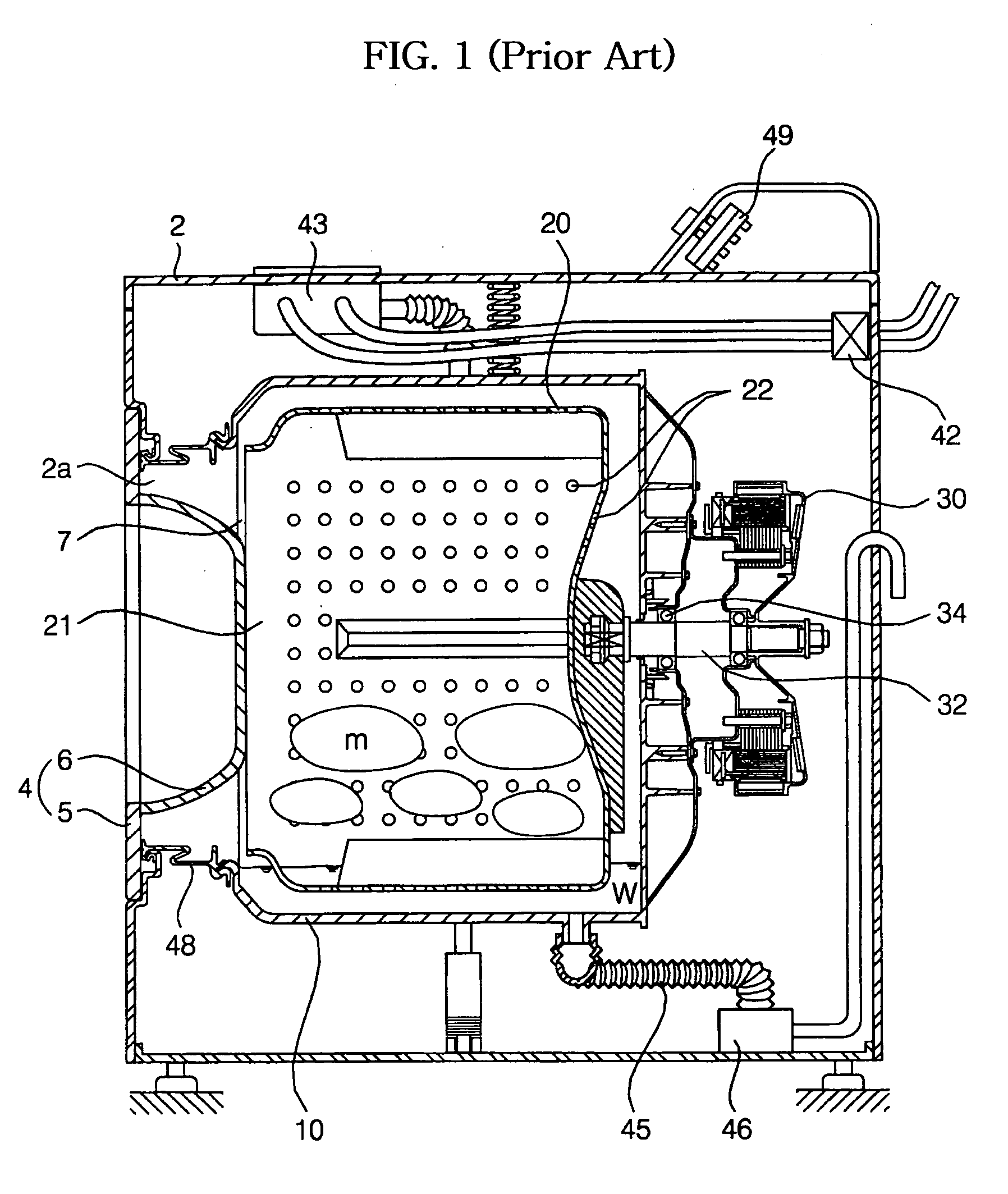Method for sensing amount of laundry of washing machine
a technology for sensing an amount and washing machine, which is applied in the direction of other washing machines, cleaning using liquids, textiles and paper, etc., can solve the problem of difficulty in precisely sensing the amount of laundry
- Summary
- Abstract
- Description
- Claims
- Application Information
AI Technical Summary
Benefits of technology
Problems solved by technology
Method used
Image
Examples
Embodiment Construction
Now, preferred embodiments of the present invention will be described in detail with reference to the annexed drawings.
FIG. 5 is a flow chart illustrating a method for sensing an amount of laundry of a washing machine in accordance with one embodiment of the present invention. FIG. 6 is a graph illustrating operation of a motor for sensing the amount of laundry of the washing machine in accordance with one embodiment of the present invention.
Herein, components of the washing machine of this embodiment are substantially the same as those of the conventional washing machine and thus denoted by the same reference numerals even though they are depicted in different drawings. Further, a detailed description of the components will be omitted because it is considered to be unnecessary.
Now, the method for sensing an amount of laundry of a washing machine in accordance with one embodiment of the present invention will be described in detail with reference to FIGS. 5 and 6.
First, the ...
PUM
 Login to View More
Login to View More Abstract
Description
Claims
Application Information
 Login to View More
Login to View More - R&D
- Intellectual Property
- Life Sciences
- Materials
- Tech Scout
- Unparalleled Data Quality
- Higher Quality Content
- 60% Fewer Hallucinations
Browse by: Latest US Patents, China's latest patents, Technical Efficacy Thesaurus, Application Domain, Technology Topic, Popular Technical Reports.
© 2025 PatSnap. All rights reserved.Legal|Privacy policy|Modern Slavery Act Transparency Statement|Sitemap|About US| Contact US: help@patsnap.com



